
When sea water started seeping onto the deck of an old fishing boat as it listed under the weight of hundreds of people in the middle of the Mediterranean, Mohammed decided not to tell the other passengers. He knew that panic could be as lethal as a holed hull or heavy winter seas.
The migrants set sail from Libya in darkness hours earlier. Mohammed, 33, a Syrian salesman who was made homeless by a chemical weapons attack, says he tried not to think about the danger of drowning as smugglers crammed him and hundreds of others onto a large boat in the early hours of Feb.18.
He was following an itinerary shared by hundreds of thousands. Since 2013, civil wars and oppressive regimes in the Middle East and Africa have forced ever-increasing numbers of people on the dangerous journey to Europe. According to the International Organization for Migration (IOM), arrivals so far this year are up 45% on 2014 and more than 330 migrants have died, compared to 36 in January and February last year.
After a few miles at sea, they were forced onto smaller vessels. Mohammed, who did not want his surname published as his family are still in Damascus, found himself at the front of the 11-metre long vessel as it motored towards Italy. “The sea was cold and I was worried about the condition of the boat,” he says. His photographs from the voyage show people covering every inch of the boat. They huddle in thick jackets and hats and some stand to create more room. Mohammed estimates that there were around 400 people on the boat, including 12 women and 20 children. “The children seemed afraid,” says Mohammed. “The boat was tilting. We were sitting at the front and at a certain point water started to come in the boat, but we didn’t tell anyone because we didn’t want to scare everyone.”
Mohammed had already traveled through five countries and been arrested, assaulted and forced to beg on the streets. With his pregnant wife and 20-month-old daughter still living in Syria and waiting for him to get them to Europe, he was determined not to be beaten by the sea when he was so close to his goal.
Boat Migrants Risk It All for New Life in Europe


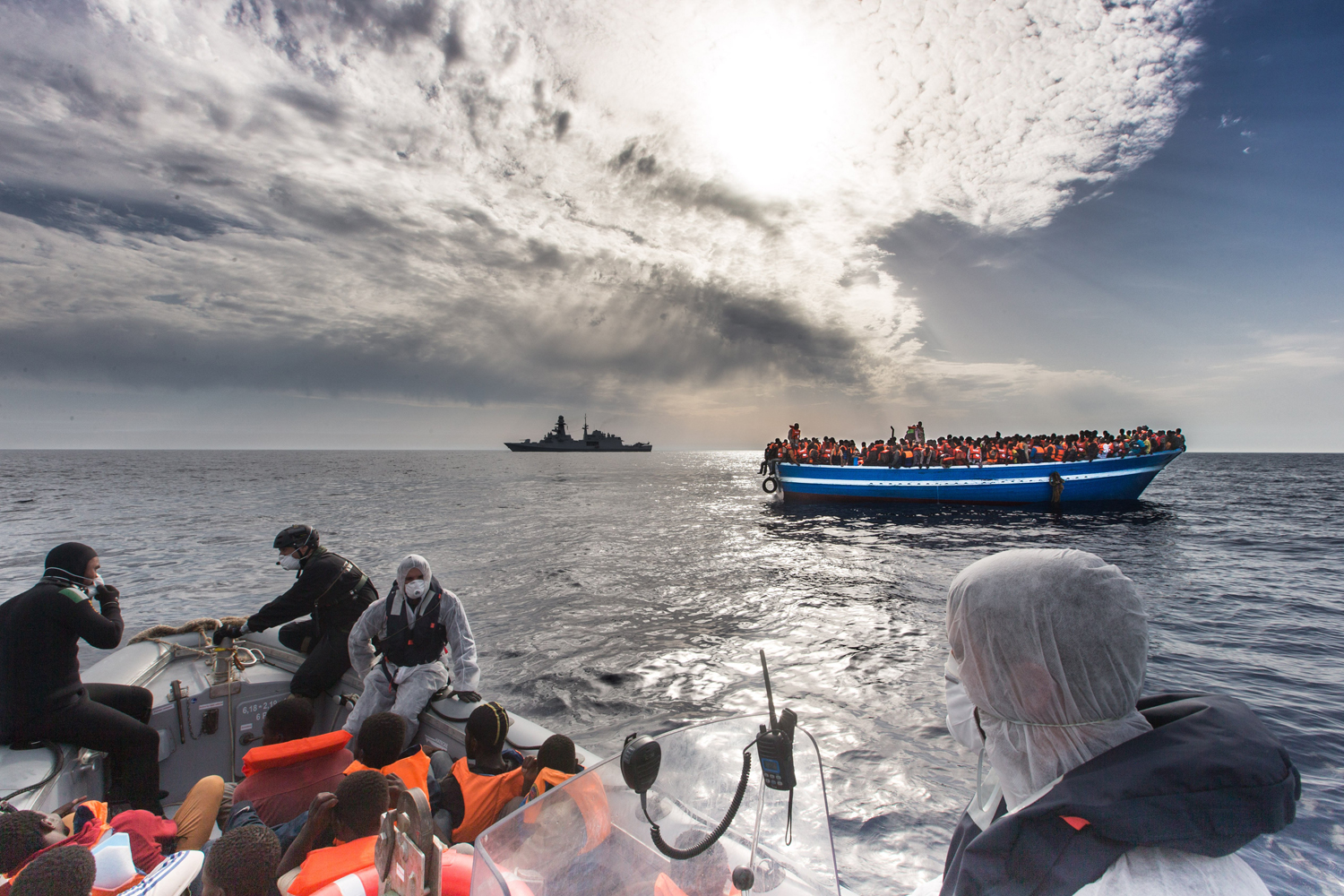
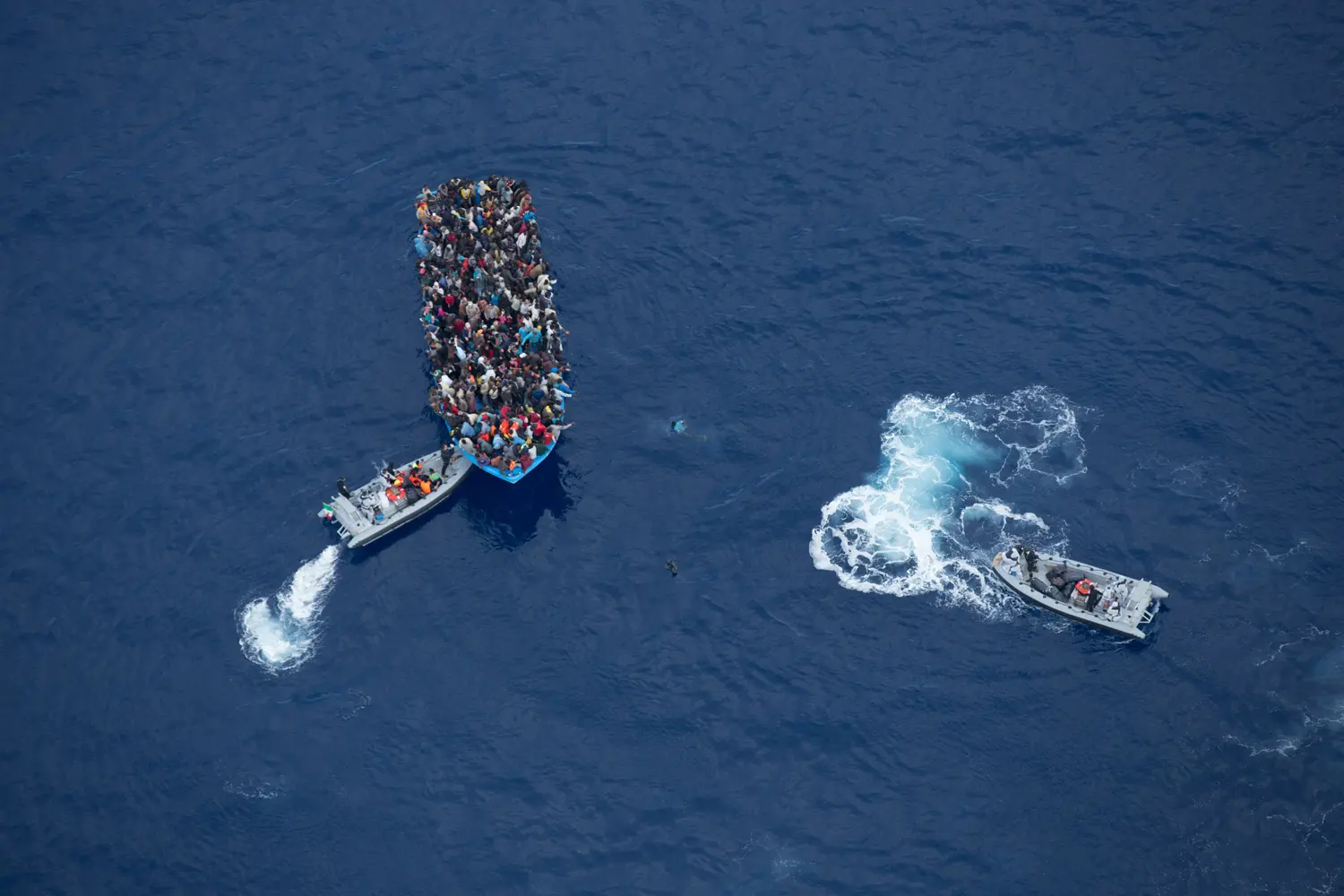

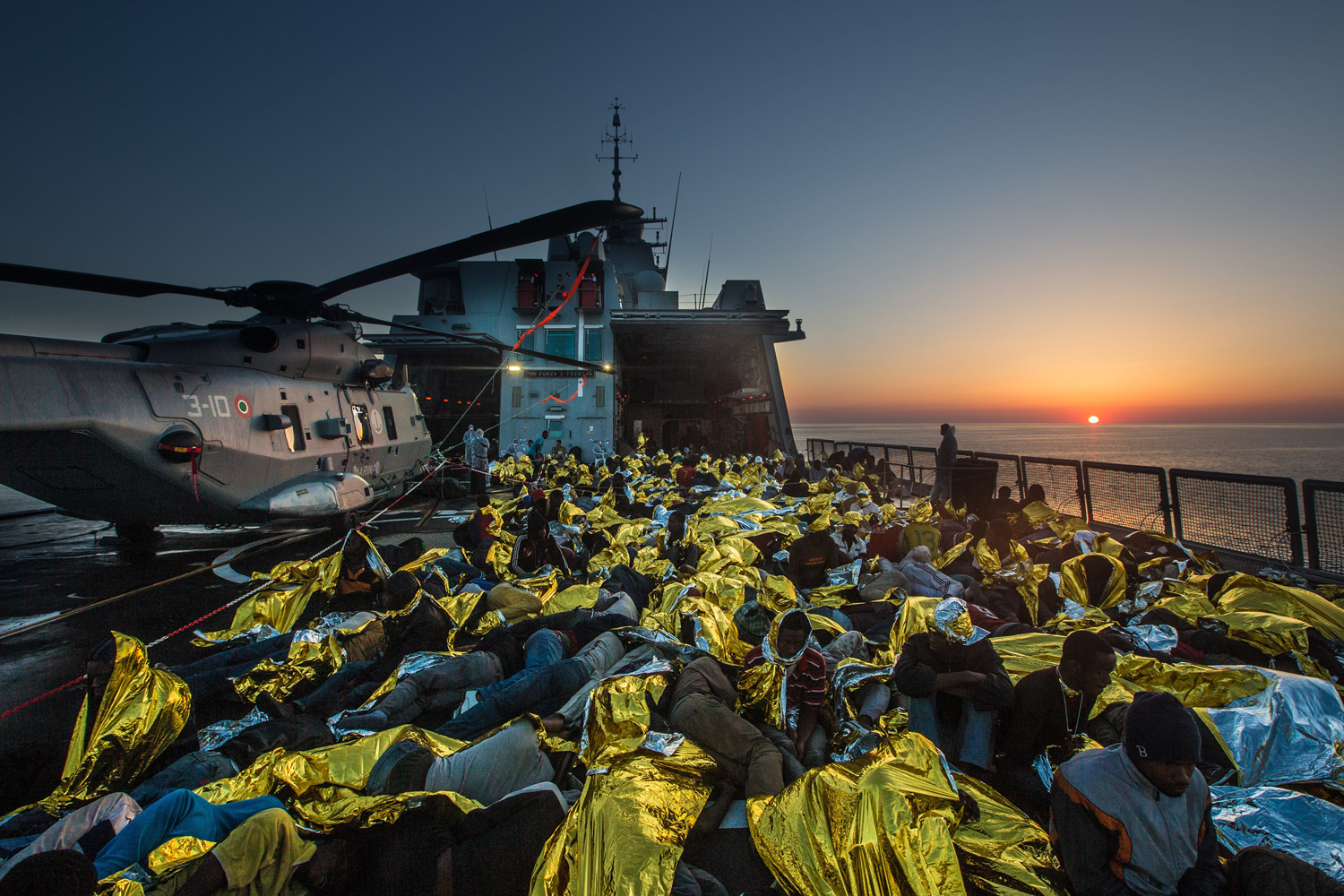
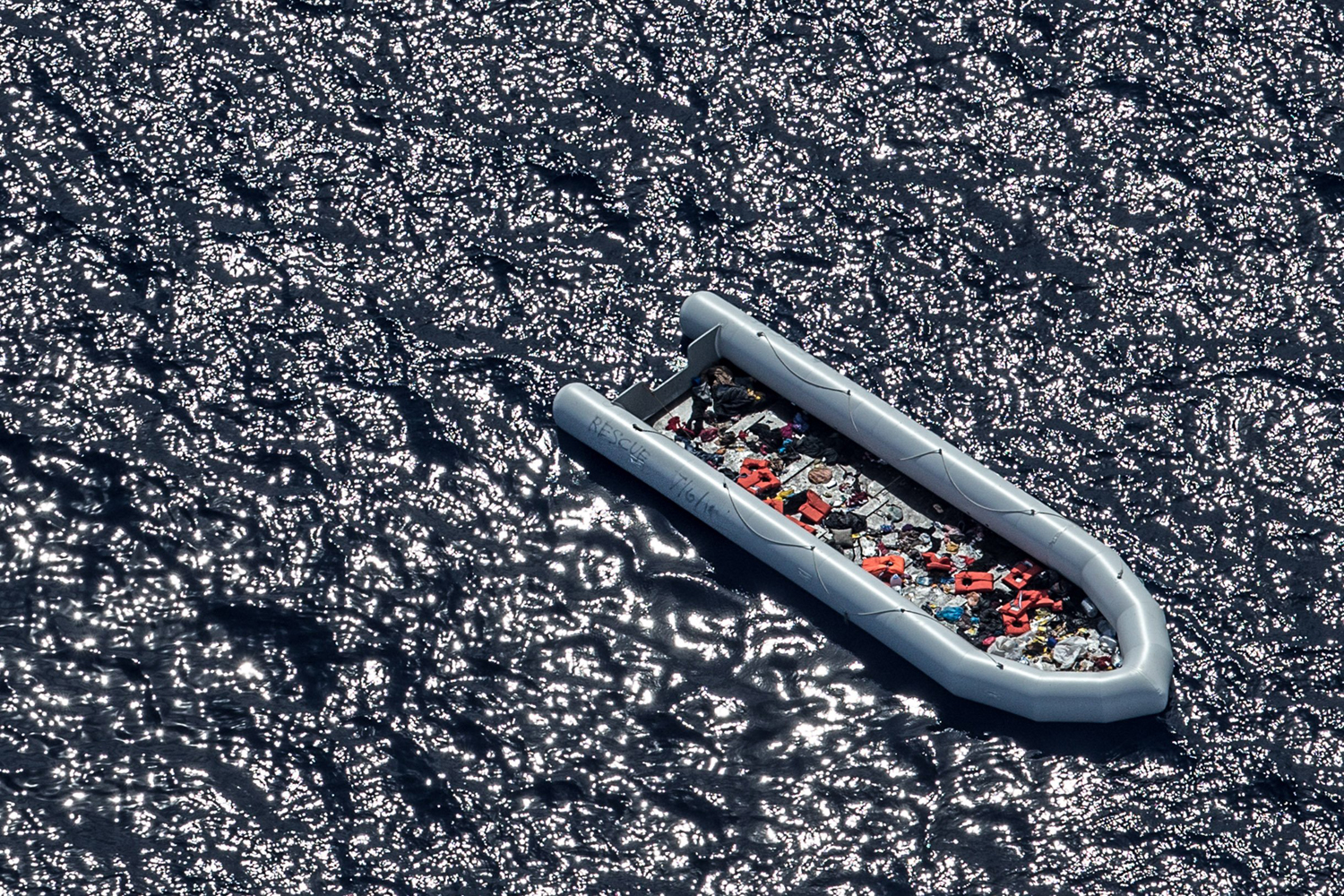
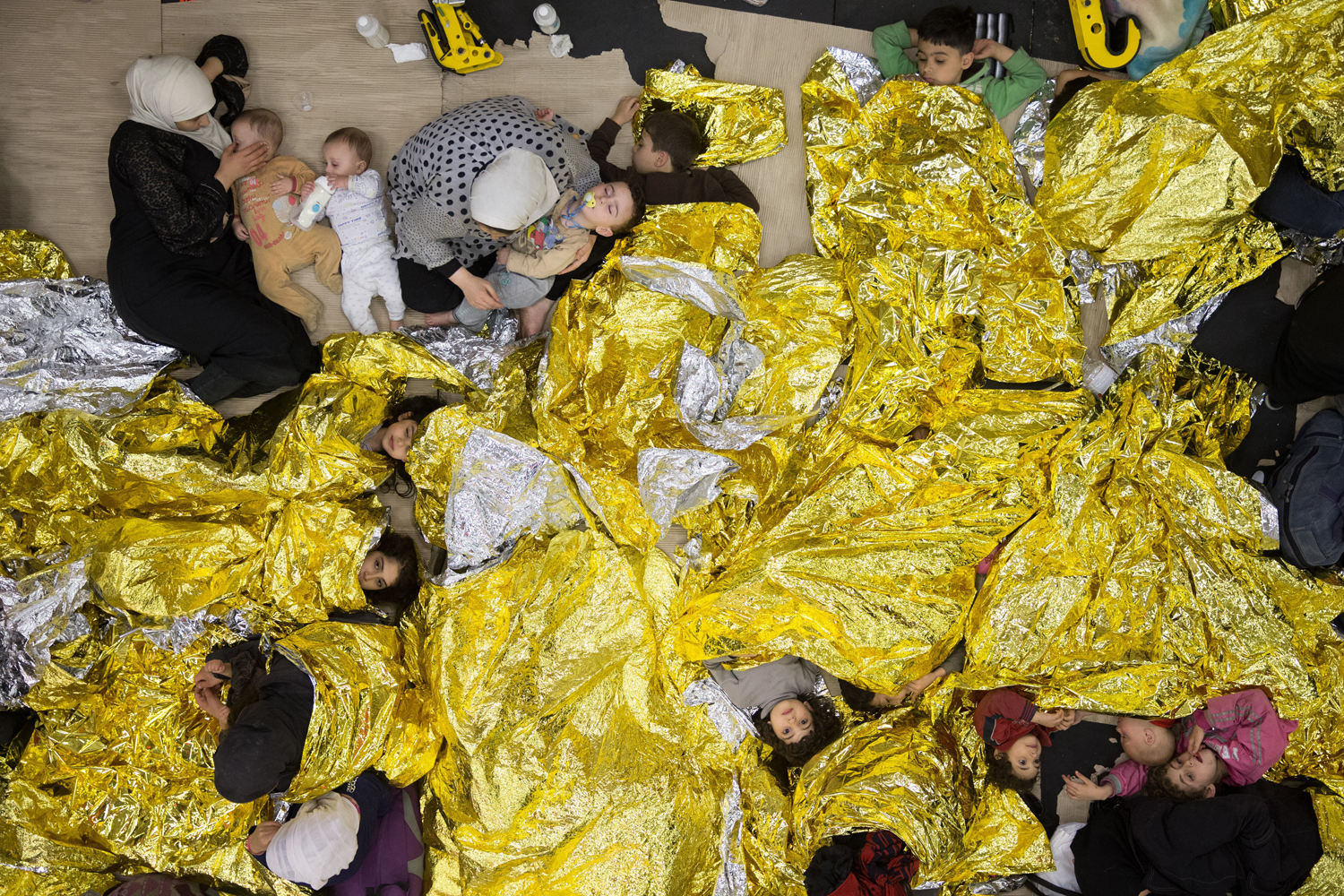
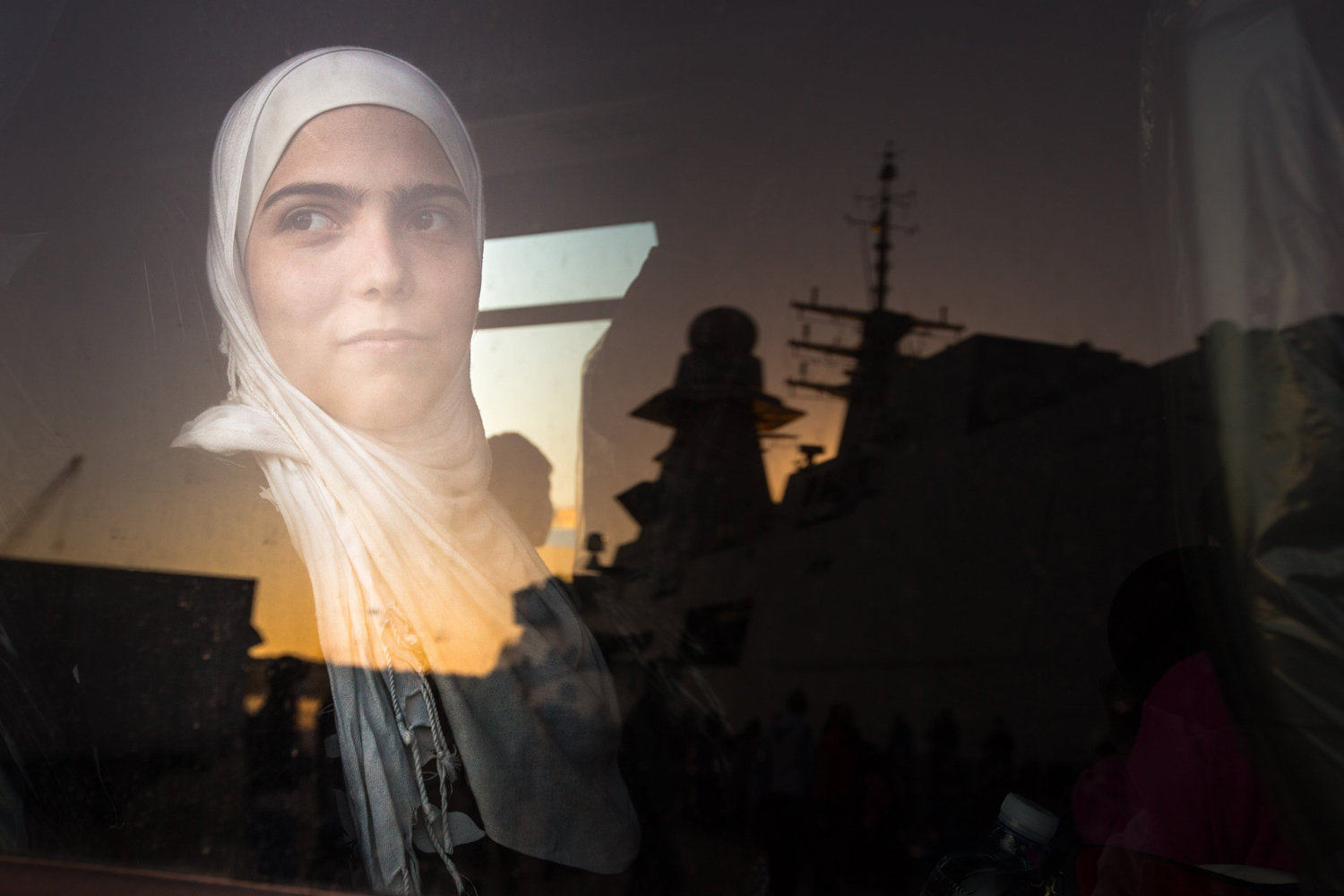

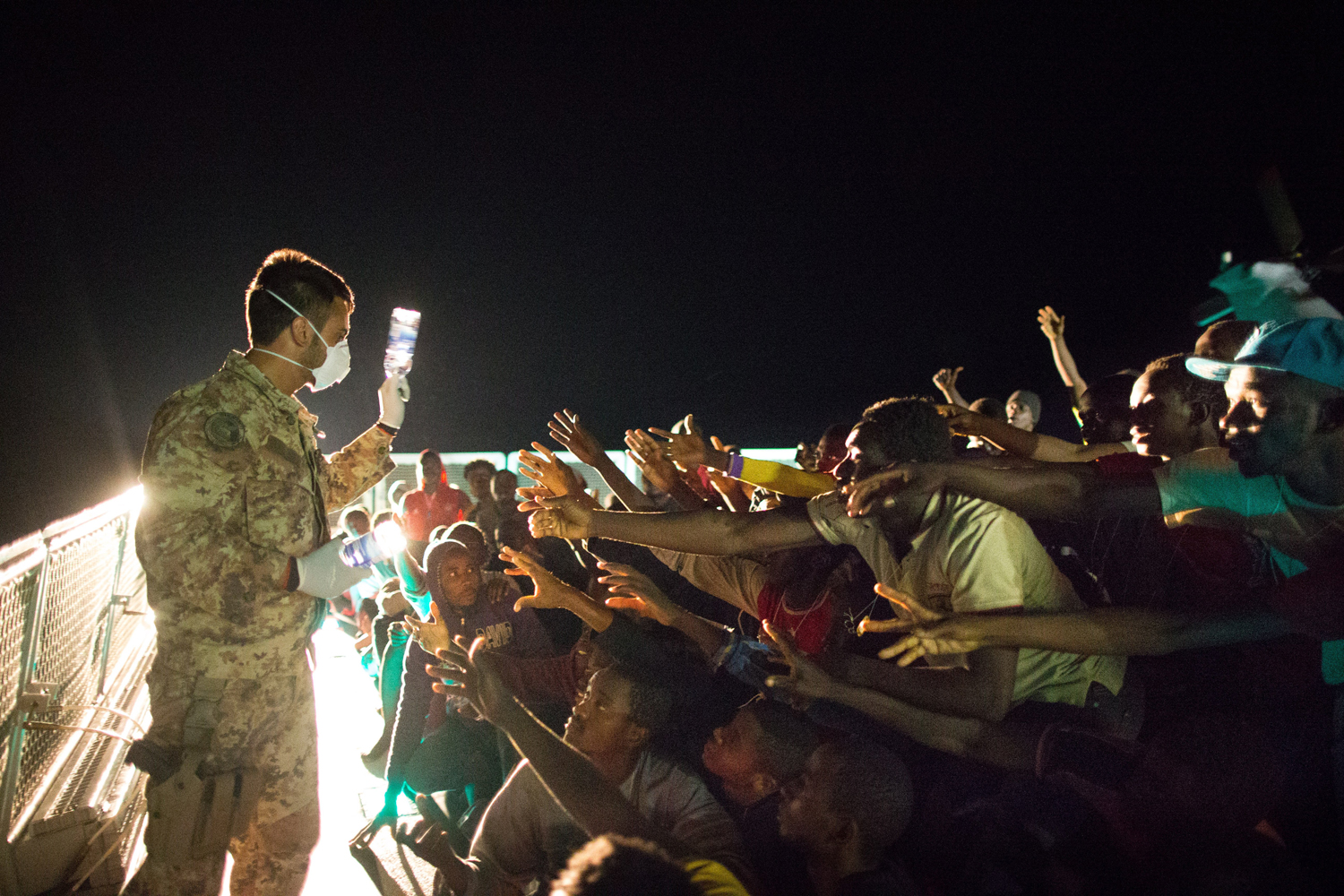

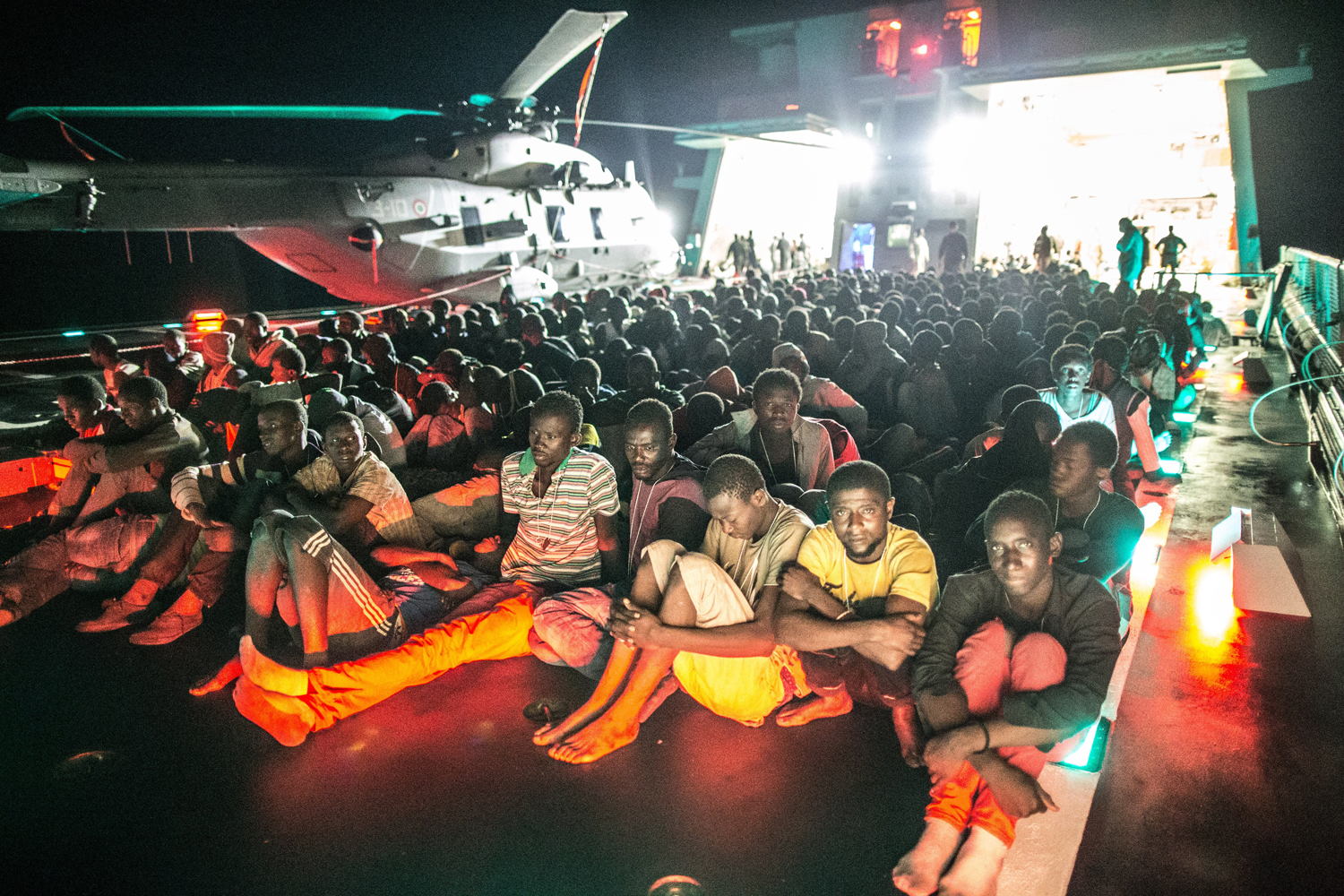
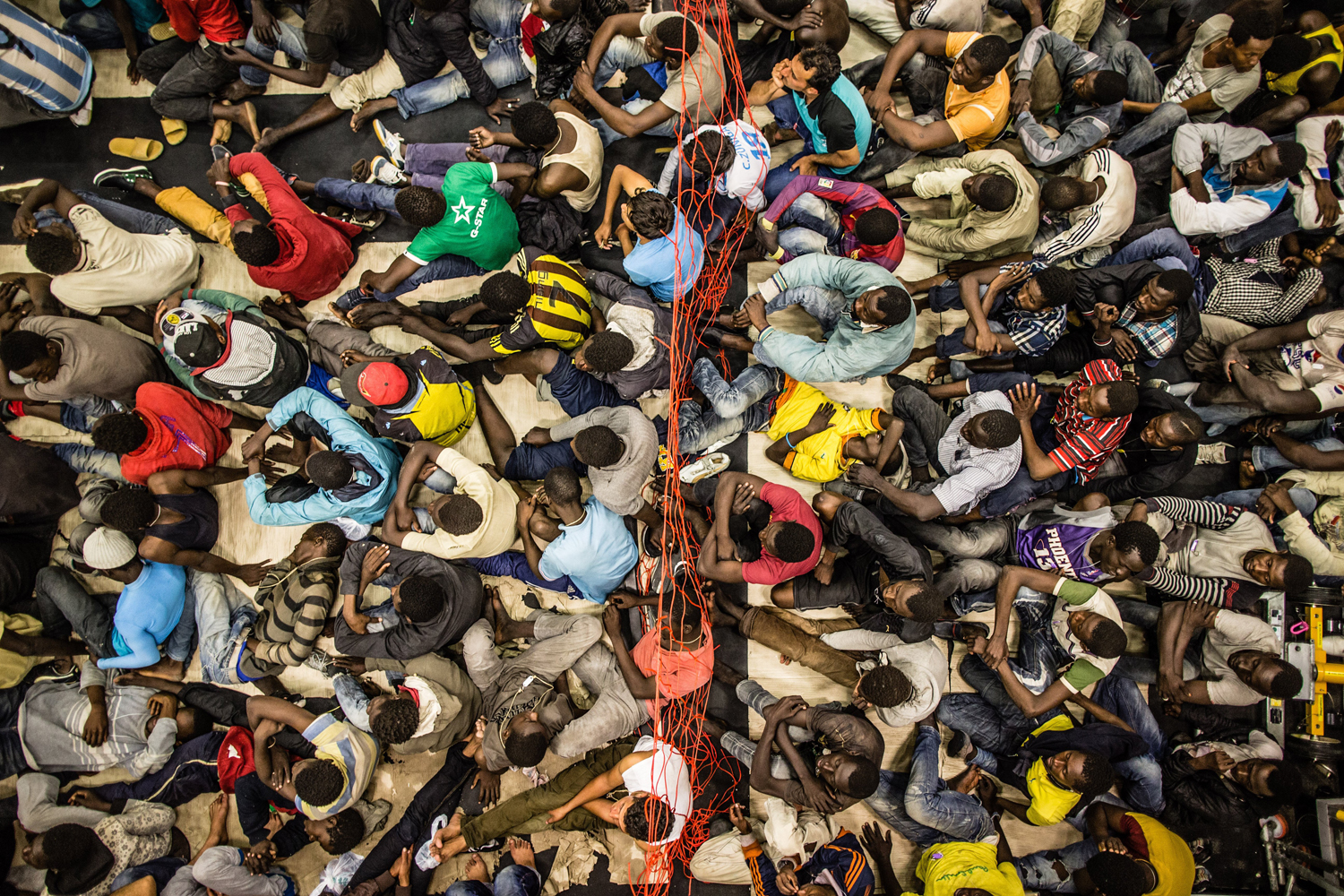
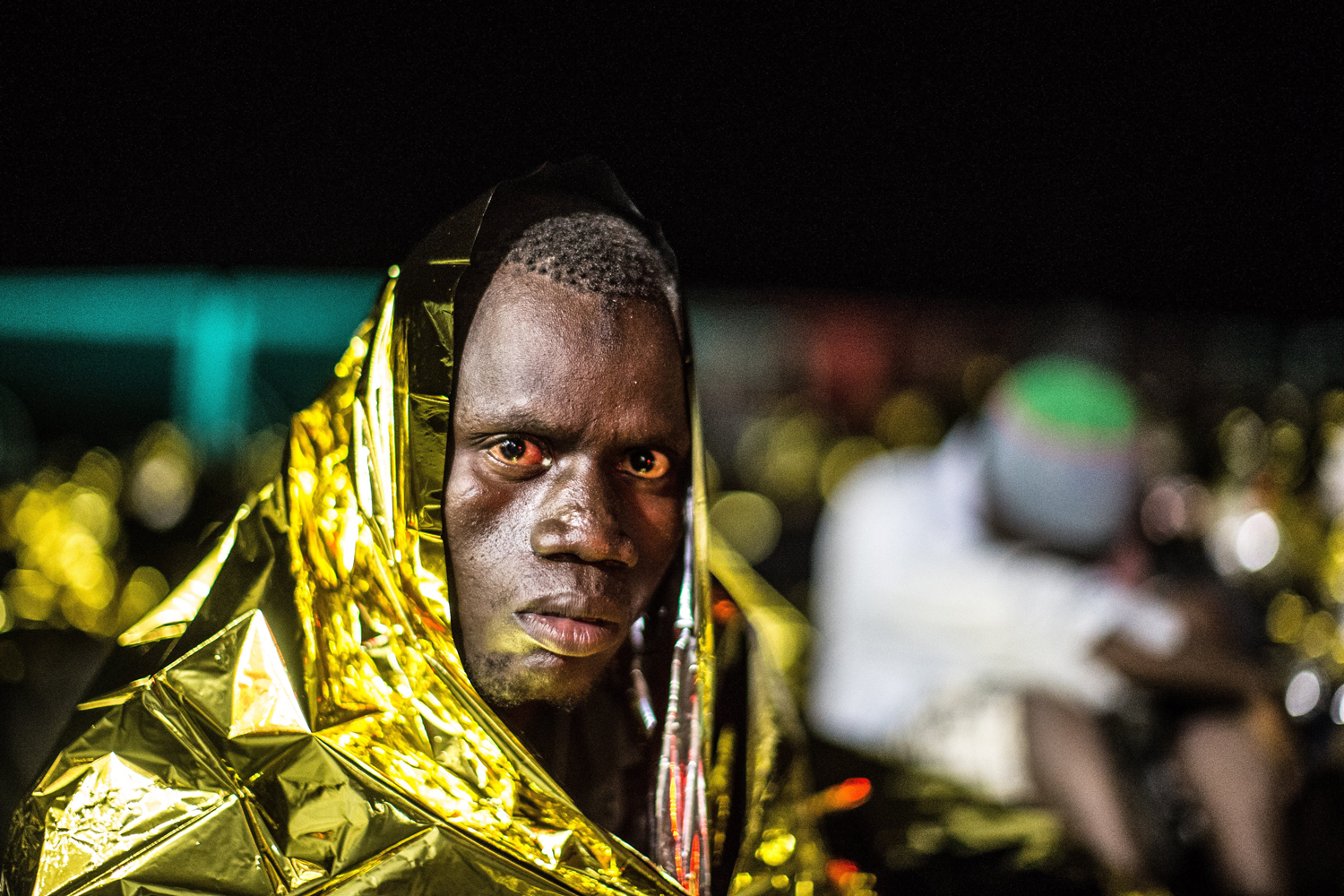
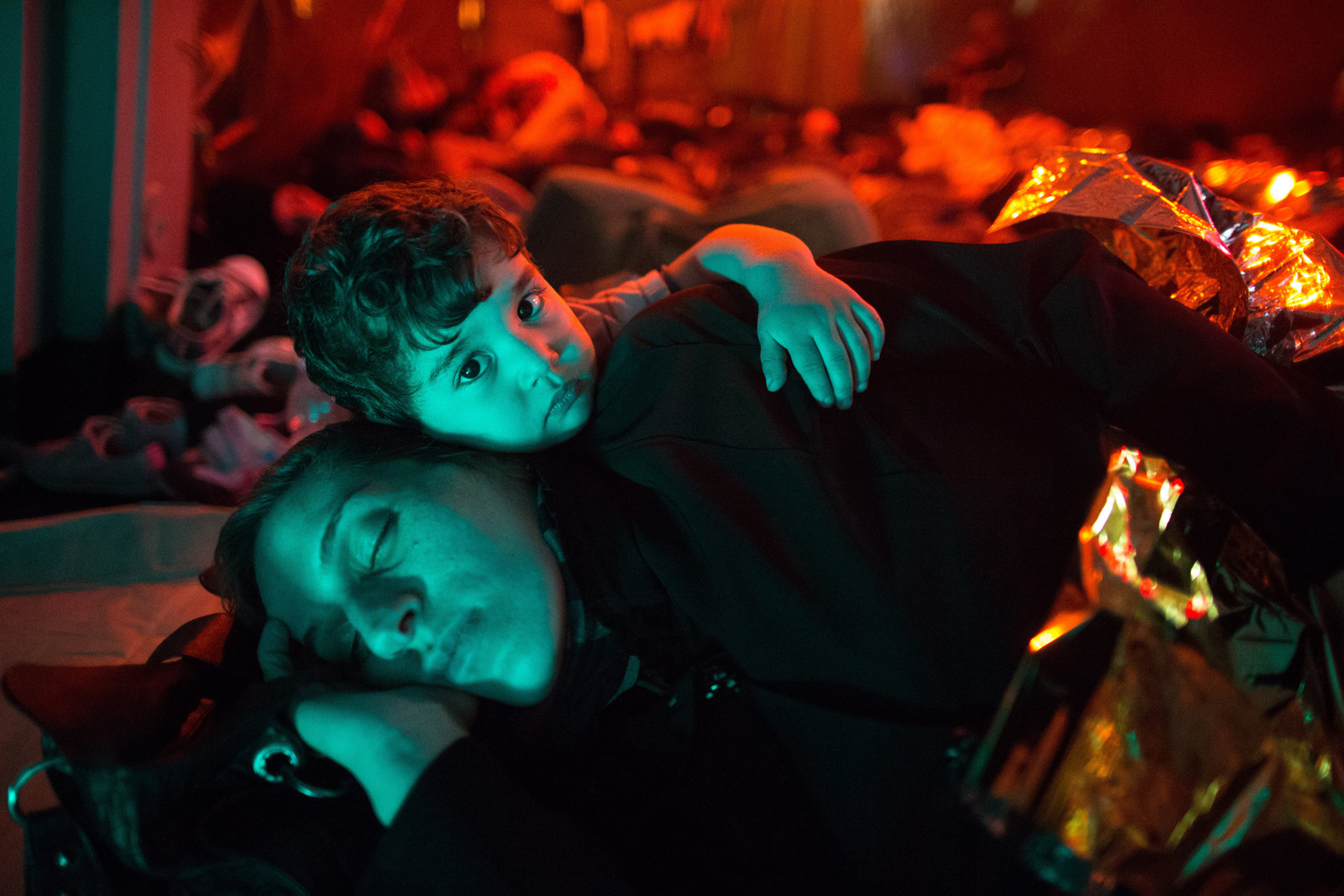

There are no legal ways for people fleeing Syria’s civil war or other situations in Somalia, Palestine, Mali or Eritrea to apply for asylum and resettlement in the European Union (E.U.). Instead they have to find a way to plant a foot on European soil and then request refugee status in that nation.
Most European governments seem determined to keep migrants out as they face political pressure from anti-immigration parties. New external border fences are going up and existing barriers reinforced but the desperation to escape remains strong. There are 3.7 million Syrian refugees living in camps in Lebanon, Jordan and Turkey, and the total number of refugees worldwide has exceeded 50 million for the first time since the Second World War. In 2013, 60,0000 people tried to reach Europe over the Mediterranean, with 600 dying, UN High Commission for Refugees figures show. Last year, that figure surged to 218,000 attempting the journey, with more than 3,500 deaths.
Libya has always been an attractive departure point for economic migrants from Africa and the Middle East. When Muammar Gaddafi was in power, the E.U. paid him to stop migrants setting sail to Europe but since his death, the flow of migrants has increased.
Political division and civil war have created a vacuum where smuggling gangs operate unimpeded and often in cohorts with militias. There are huge sums to be made, with each migrant paying up to $1,500 for the sea crossing. But the danger in Libya has also increased, so rather than wait for calmer seas, this year migrants are willing to risk hypothermia or drowning to escape the chaos, says Flavio Di Giacomo, a spokesman for the IOM. “Many migrants told us that, even if they knew that the journey is dangerous and that they could die in the desert or at sea, they did not expect all this violence in Libya,” he says.
Mohammed’s journey began on Aug. 21, 2013, when Ghouta, a Damascus suburb where he lived, was hit with rockets carrying the nerve agent sarin. At least 350 people were killed, but Mohammed and his wife were in central Damascus that day. They could not return to their contaminated home and stayed in the capital to continue with their life, but found it difficult. “Many times when I was traveling for work I found myself in the middle of the fighting, and I had to hide underneath the van,” Mohammed says.
He was struggling to make enough money to provide for his family, and when he heard that he was due to be conscripted, he decided to escape to Europe. At the beginning of November last year, he said goodbye to his wife and daughter and boarded a plane to Algeria.
Mohammed, his 14-year old nephew and three other men planned to travel overland through Algeria and Tunisia and into Libya, where they planned to make the boat trip to Italy. But the Tunisian police caught them and forced them to return to Turkey, where Mohammed had to re-plan the entire journey.
For two months he stayed with friends in Istanbul, making contacts with smugglers and trying to raise more funds. Eventually a smuggling gang agreed to get them Libyan visas under the premise that they were businessmen flying to Libya for work. On Jan. 15, they boarded a plane to Tripoli — only to find more hardship awaiting them. “The airport we flew into was controlled by rebel forces,” says Mohammed. “They took everything from us and locked us away for a week.”
As Mohammed had only agreed to pay the smugglers in Turkey their $2,500 fee once they were safely en route to Europe, they intervened — although Mohammed wonders if it was all a set up from the start. “It seemed like [the smugglers] had an agreement with the rebels because in the end they said each of us had to give them $300 and we’ll let you go,” he says.
They were freed but the rebels kept their belongings and for 10 days the men were forced to beg on the streets. Eventually their personal items were returned, and the smugglers took them on the final overland leg of the journey to the coastal town of Zuara. “We were beaten during the trip to the boats,” Mohammed says. “They punched me in the face and beat me on my feet.”
On the boat, Mohammed worried that they were not heading in the right direction. “When we got into this little boat we didn’t know where we were going — we were almost freezing and without hope,” he says.
Water was pooling at his feet and there was nothing he could do but stay still. He didn’t want to cause a panic. In one of the worst migrant boat disasters, a vessel carrying 515 sank within sight of the Italian island of Lampedusa in October 2013. A fire on board caused a panic, and as people rushed to the sides to fling themselves into the sea, the vessel capsized. At least 300 people were killed.
It was around midday when the passengers spotted an oil rig. An hour later an Italian navy ship arrived and rescued the migrants.
A week earlier, around 300 migrants had not been so lucky. Armed smugglers on the Libyan coast had forced hundreds of people into four inflatable dinghies, despite unusually rough seas. Only one dinghy made it to Italy with a handful of survivors on board. The rest were lost. The incident happened days after 29 migrants died of hypothermia while they were being towed to safety by an Italian coastguard vessel.
The tragedies provoked scorn at the E.U.’s response to the growing crisis at sea. An Italian naval operation saved 150,000 lives between October 2013 and October 2014 but was replaced by a more limited E.U. mission called Triton operating with fewer staff, a smaller budget and a limited range.
The mayor of Lampedusa, Giusi Nicolini, said that the 29 migrants would never have frozen to death if Italy’s Mare Nostrum operation was still running. The UN High Commissioner for Refugees, Antonio Guterres, called Triton “woefully inadequate”. The E.U. responded by extending Triton to the end of the year, but its scope remains unchanged.
Italy meanwhile is preparing for unprecedented numbers of migrants arriving. Already the shelters on Lampedusa are full and hundreds of migrants arrive at Milan Central Station every week. Mohammed is currently staying at a shelter in Milan for 50 people that houses 100.
The E.U. has offered another €13.7m to help Italy look after the new arrivals, but Gabriella Polifroni, spokeswoman for Milan’s director of social affairs says they also need an overhaul in E.U. policy and a fairer distribution of the refugees. “There is a whole continent, so why can’t we organize them better?” she asks.
Mohammed certainly doesn’t want to stay in Italy, where it can take up to a year for an asylum application to be processed. He has already spent $9,000 in getting to Europe and he won’t stop until he gets to Germany. “My main focus now is to go to a country in Europe where I can reunite with my family,” he says, before he returns to his room to plot the final stretch of his journey.
More Must-Reads From TIME
- The 100 Most Influential People of 2024
- The Revolution of Yulia Navalnaya
- 6 Compliments That Land Every Time
- What's the Deal With the Bitcoin Halving?
- If You're Dating Right Now , You're Brave: Column
- The AI That Could Heal a Divided Internet
- Fallout Is a Brilliant Model for the Future of Video Game Adaptations
- Want Weekly Recs on What to Watch, Read, and More? Sign Up for Worth Your Time
Contact us at letters@time.com